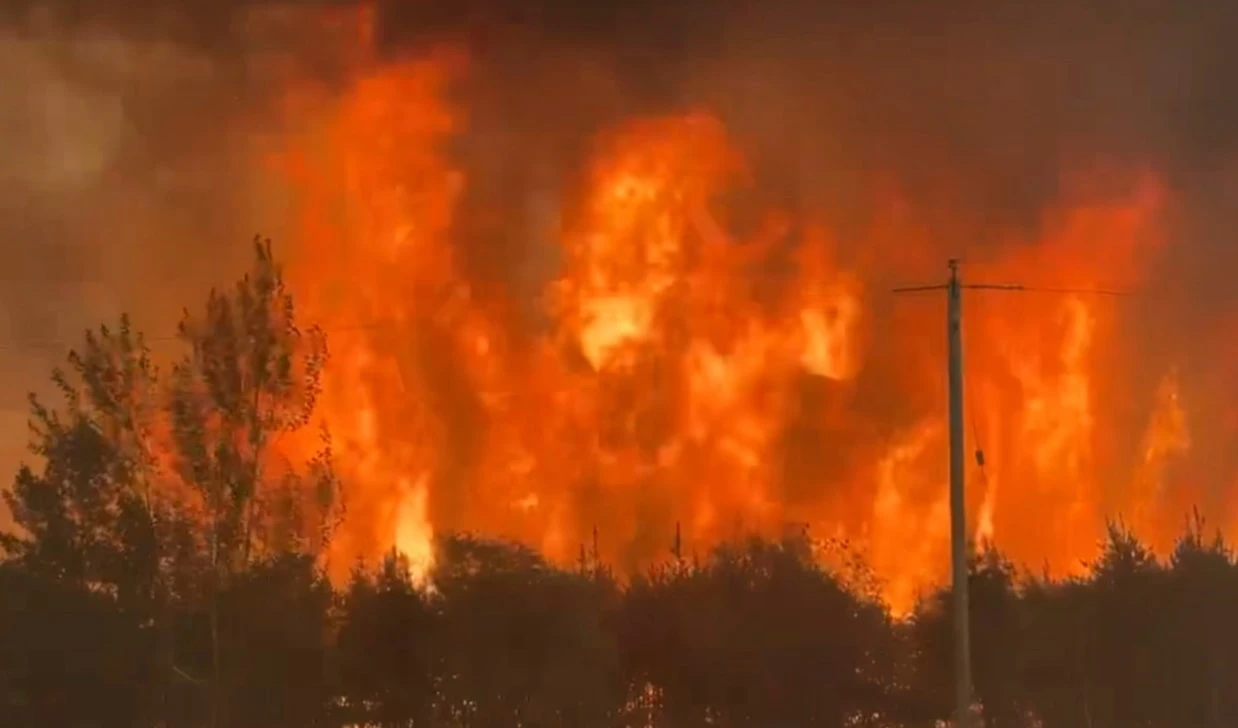Current wave of Canadian wildfires become second-worst on record
Canada’s 2025 wildfire season is already the second-worst on record, with more than 470 fires out of control and over 7.3 million hectares burned.
-

The McDougall Creek wildfire burns in West Kelowna, British Columbia, Canada, on Aug. 17, 2023. (Darren Hull/AFP via Getty Images)
Canada’s 2025 wildfire season has already become the second-worst on record, with scientists warning on Monday that climate change is exacerbating the destruction, forcing mass evacuations, and filling skies with smoke across North America.
According to the Canadian Interagency Forest Fire Centre (CIFFC), more than 470 fires are currently classified as out of control. As of the latest data, 7,318,421 hectares of land have burned, nearly 78% more than the five-year average of 4,114,516 hectares.
The devastation trails only the record-breaking 2023 wildfire season, which saw 17,203,625 hectares consumed by flames.
“This is our new reality… the warmer it gets, the more fires we see,” said Mike Flannigan, BC research chair for predictive services, emergency management, and fire science at Thompson Rivers University in Kamloops.
A June analysis by the United Nations University in Shibuya, Japan, described the fires as a “stark manifestation” of the climate crisis. Unusually warm and dry spring weather resulted in temperatures 2.5°C above average, extending the fire season and increasing lightning strikes, a major ignition source.
Flannigan explained that hotter conditions draw moisture from vegetation and the forest floor, leaving fuel tinder-dry. “It means more of the material is dried out, is available to burn when the fire does come… leading to bigger flames, higher intensity, which gets to be difficult to impossible to extinguish,” he said.
Prairie provinces hardest hit
The most severe fires this year have been concentrated in Saskatchewan and Manitoba, which together account for about 60% of all burned hectares.
In Saskatchewan, the Canadian Red Cross has assisted over 17,000 people from more than 6,700 households in evacuating their communities. Thirteen communities in northwest Saskatchewan, several of which are First Nations, remain under evacuation orders.
One of the hardest-hit areas, Denare Beach, was largely destroyed in June by an intense blaze. The wildfire season has also reached Newfoundland and Labrador, where several towns are under evacuation orders as flames spread across the province.
Smoke impacts cross borders into the US
For the third consecutive year, Canada is experiencing wildfire activity far above average, said John Abatzoglou, a professor at the University of California, Merced, and co-author of the UN University report.
He noted that massive smoke plumes have drifted south, triggering severe air quality warnings across multiple US states this month, a reminder that the disaster’s impact extends beyond evacuation zones.
"This is a really key point… its ability to impact everything from quality of life to human health and even mortality," Abatzoglou said.
Public health experts are urging governments to prepare for recurring "smoke days" by improving indoor air safety, particularly in communities with inadequate filtration systems.
Canada wildfires are expected to remain a critical environmental disaster for the rest of the year, with experts warning that the climate crisis will continue to drive longer and more destructive fire seasons in the years ahead.

 3 Min Read
3 Min Read










